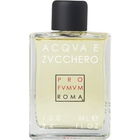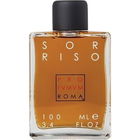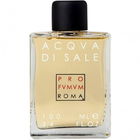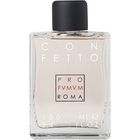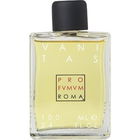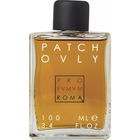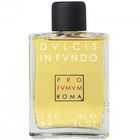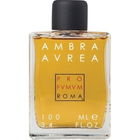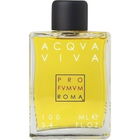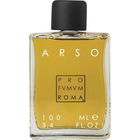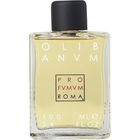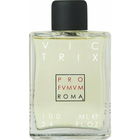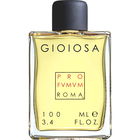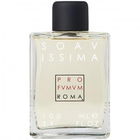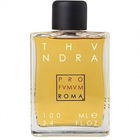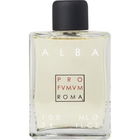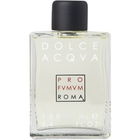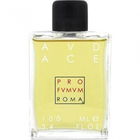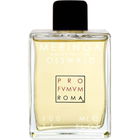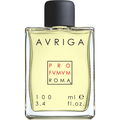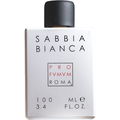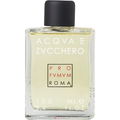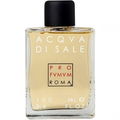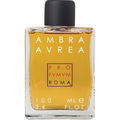
Ergoproxy
1130 Reviews
Translated · Show original

Ergoproxy
Top Review
12
The Way to Oxiana? Always Follow Your Nose!
If you enter the name "Oxiana" into the all-powerful search engine, you will find, alongside a brand for oxygen cosmetics, a literary reference to a travel guide called "The Way to Oxiana" by a certain Robert Byron. This descendant of the famous Lord Byron traveled through the Near and Middle East in 1933 and immortalized his impressions, apparently quite entertainingly, in a book.
Oxiana referred to a region along the Oxus River, now Amudarja, which lies in the western part of Central Asia. There is apparently also an ancient treasure of gold that was found in this region.
What these facts have to do with the eponymous perfume from the brand Profumum Roma becomes clear to me when I see the pyramid. Myrrh!
Myrrh has been and is produced not only in Africa but also in parts of Asia, and I assume that this explains the name as well.
When I first applied the fragrance, I noticed a somehow fatty sweet lavender note in the opening, which lasts quite a while. Was lavender omitted from the pyramid here?
As I could read, the resin Opoponax can indeed develop a lavender note with an aromatic sweet aftertaste, and that's exactly how Oxiana smells in the top note.
Over time, this lavender note fades, and Oxiana becomes sweeter, oilier, somehow berry-like, and skims, in my opinion, just shy of being a gourmand perfume. I must admit that I have never smelled a berry-like myrrh and wonder if it could still be remnants of the lavender note?
Only after a very long time does a certain earthy nuance join the berry-like myrrh, but the patchouli in the base does not come into full effect. The gourmand impression now fades, and Oxiana smells like a wonderful, expensive skincare product.
Both the longevity and the projection are, as the name suggests, legendary and guarantee a lasting fragrance experience, not just for oneself.
Although I like resinous scents and find Oxiana really good, I don't really want to smell like it, and I can't even say why.
Oxiana referred to a region along the Oxus River, now Amudarja, which lies in the western part of Central Asia. There is apparently also an ancient treasure of gold that was found in this region.
What these facts have to do with the eponymous perfume from the brand Profumum Roma becomes clear to me when I see the pyramid. Myrrh!
Myrrh has been and is produced not only in Africa but also in parts of Asia, and I assume that this explains the name as well.
When I first applied the fragrance, I noticed a somehow fatty sweet lavender note in the opening, which lasts quite a while. Was lavender omitted from the pyramid here?
As I could read, the resin Opoponax can indeed develop a lavender note with an aromatic sweet aftertaste, and that's exactly how Oxiana smells in the top note.
Over time, this lavender note fades, and Oxiana becomes sweeter, oilier, somehow berry-like, and skims, in my opinion, just shy of being a gourmand perfume. I must admit that I have never smelled a berry-like myrrh and wonder if it could still be remnants of the lavender note?
Only after a very long time does a certain earthy nuance join the berry-like myrrh, but the patchouli in the base does not come into full effect. The gourmand impression now fades, and Oxiana smells like a wonderful, expensive skincare product.
Both the longevity and the projection are, as the name suggests, legendary and guarantee a lasting fragrance experience, not just for oneself.
Although I like resinous scents and find Oxiana really good, I don't really want to smell like it, and I can't even say why.
8 Comments




 Musk
Musk Opoponax
Opoponax Patchouli
Patchouli Myrrh
Myrrh

 Yatagan
Yatagan Hektor
Hektor Rieke2021
Rieke2021 Seejungfrau
Seejungfrau Scentist
Scentist Terra
Terra EinfachDoug
EinfachDoug